Art & Exhibitions
Erotic Collages and Mysterious Hats: How a Whitechapel Gallery Show Is Making Sense of the Surreal Art of Eileen Agar
Agar isn’t as well known as some of her peers, partly because her artwork is so tricky to pin down.

Agar isn’t as well known as some of her peers, partly because her artwork is so tricky to pin down.

Karen Chernick

For years, the Tate has held a trove of artworks by 20th-century British artist Eileen Agar without even necessarily knowing it.
“Interestingly, [her assemblages are] in their archive, not in their collection of artworks,” says Laura Smith, the Whitechapel Gallery curator who organized an Agar retrospective opening this May. “But she made them as artworks.”
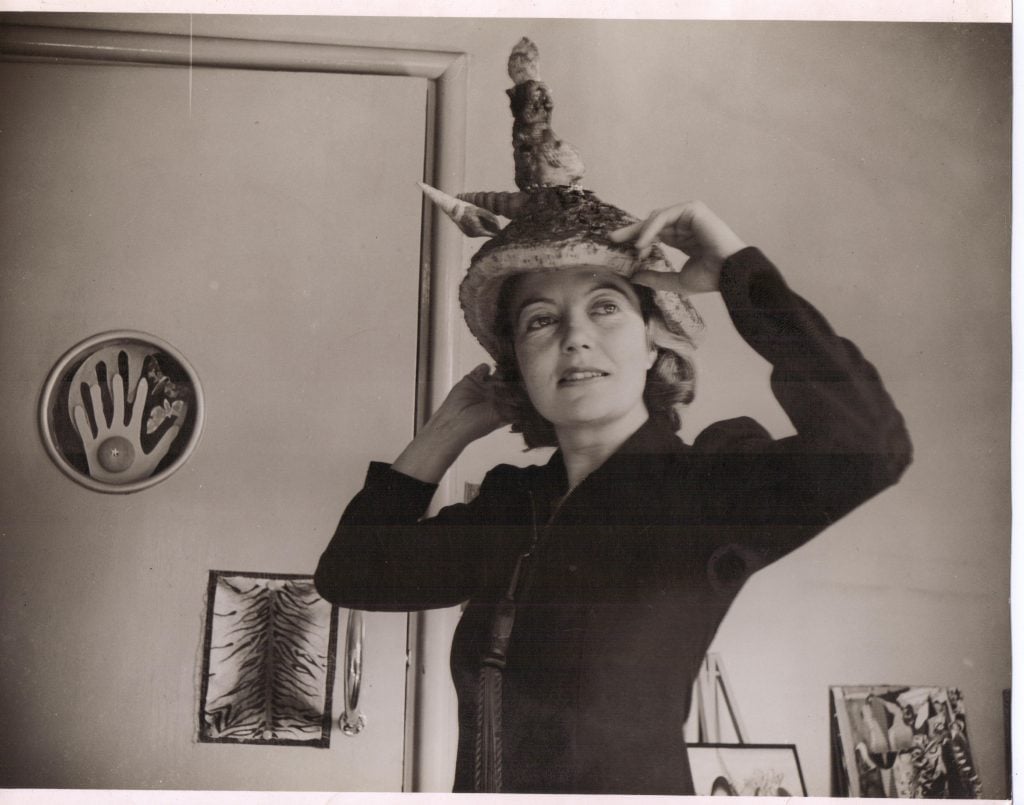
Eileen Agar wearing a “Ceremonial Hat for Eating Bouillabaisse.” The picture was taken in 1936. © The estate of Eileen Agar.
This misplacement isn’t entirely the Tate’s fault. Agar’s assemblages are hard to define and full of natural curios, like a shell calcified to the top of a sea urchin or small vertebrae glued to string.
They’ve been at the Tate archive along with Agar’s unpublished stories and around 1,000 photographs that she took from the mid-1930s onwards. Few of her photographs of fellow artists or sculptural rock formations in Brittany have ever been publicly seen.
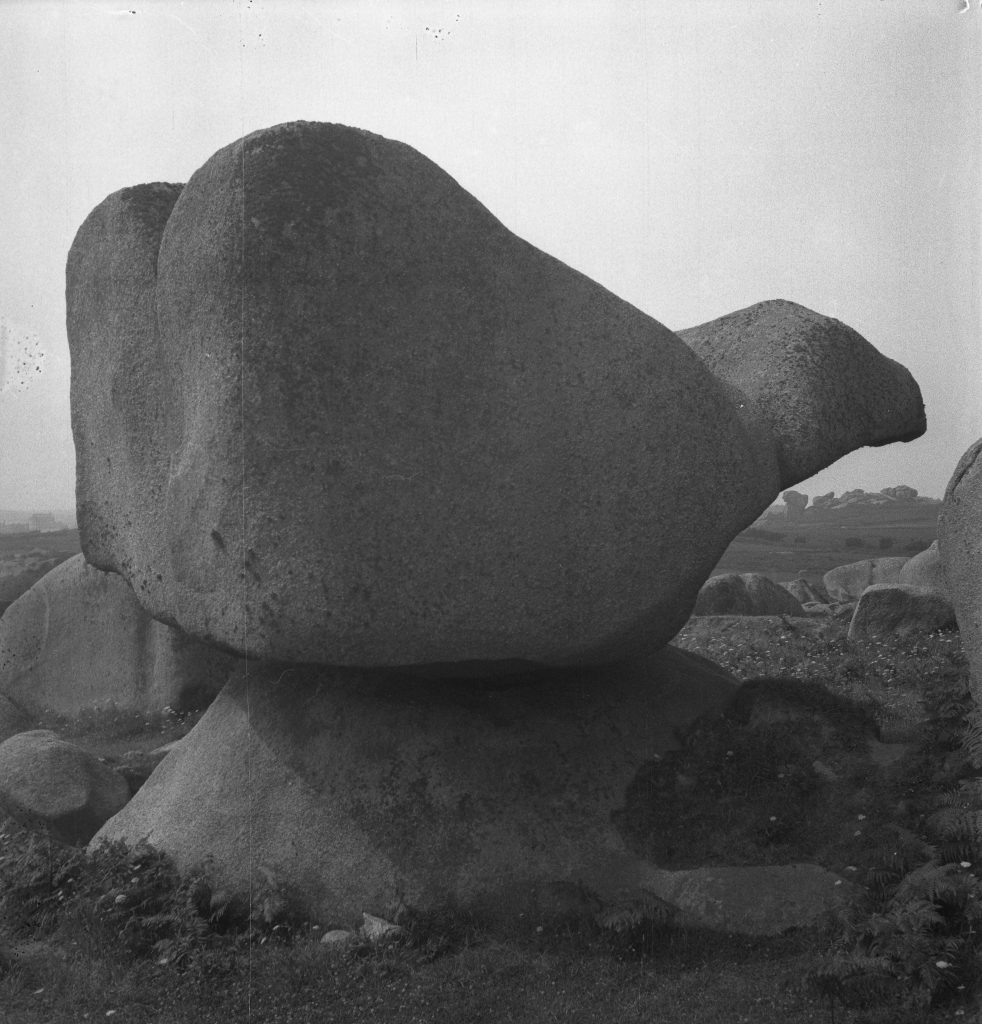
Eileen Agar’s photograph of “Bum and thumb rock” in Ploumanac’h (1936). © Tate Images.
“The majority of her photographic archive exists as negatives, rather than prints,” exhibition co-curator Grace Storey wrote in the show’s catalogue. Around 50 of these negatives have been printed for the first time for “Eileen Agar: Angel of Anarchy,” the artist’s retrospective at Whitechapel Gallery, and are, like her unseen assemblages and the rest of her obscure work, slowly coming to light.
“Angel of Anarchy,” which coincides with the release of a brief Agar biography published by Eiderdown Books, is the largest exhibition of Agar’s work to date, and is named after two sculptures she made in the 1930s by shrouding plaster busts with silk blindfolds, burlap, beads, and turquoise feathers.
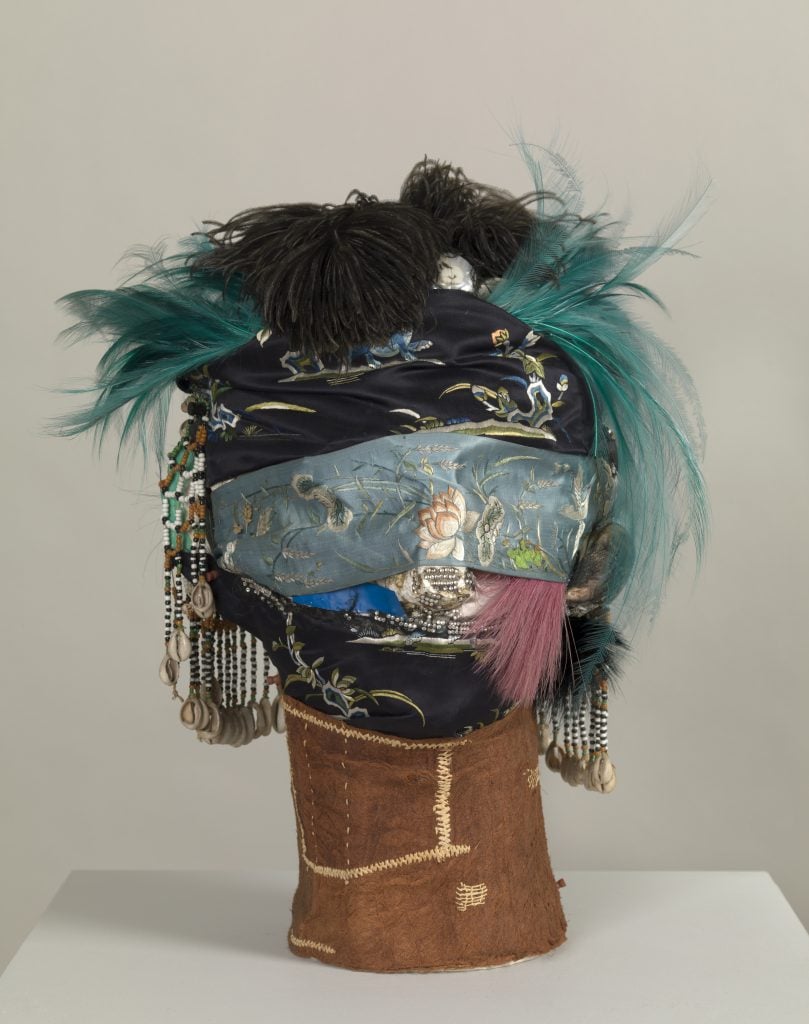
Eileen Agar, Angel of Anarchy (1936–40). © Tate Images.
“It’s a description of Eileen as much as it is a title for the show,” Smith said. Frustrated by how Surrealists liked to peg women artists as their muses, the unconventional Agar wanted to flip that stereotype with these heads, which were molded after the face of her partner, Joseph.
Though Agar didn’t quite change the gender imbalance outside her Kensington studio, her retrospective and a simultaneous Whitechapel Gallery show devoted to British women of Surrealism fall within a wave of exhibitions attempting to correct that movement’s art-historical record.
Last year, “Fantastic Women: Surreal Worlds from Meret Oppenheim to Frida Kahlo” at the Schirn Kunsthalle in Frankfurt exhibited a group of 34 female Surrealists, and in 2019 the Tate Modern hosted solo shows for photographer Dora Maar and painter Dorothea Tanning. In 2015, a solo exhibition was dedicated to painter Leonora Carrington at Tate Liverpool.
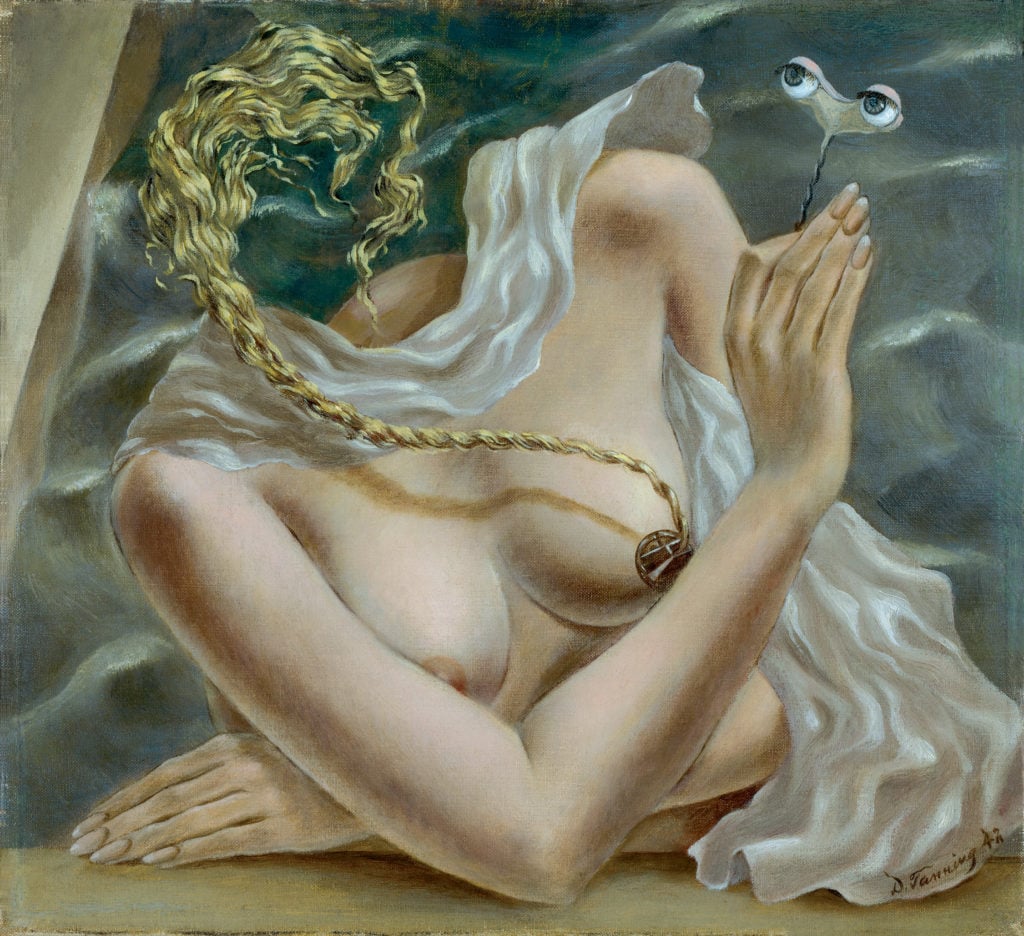
Dorothea Tanning, Voltage (1942). Collection Ulla und Heiner Pietzsch, Berlin. © The Estate of Dorothea Tanning/VG Bild-Kunst, Bonn 2020. Photo: Jochen Littkemann, Berlin
Agar isn’t as big a name as some of her peers, partly because she remained in England after World War II, unlike other Surrealists who moved on to places like Spain, Mexico, and Paris.
But the bigger issue is that her work is tricky to pin down. “The way that she brought abstraction and Surrealism together, with this approach to color and nature and joy, it creates a very unique style that doesn’t exist anywhere,” Smith said. “She didn’t waver or change what she was doing to fit into any particular tendency, which, historically has probably been difficult.”
Agar’s work is an idiosyncratic combination of painting, photography, collage, and sculpture—fused in original configurations and using bizarre materials.
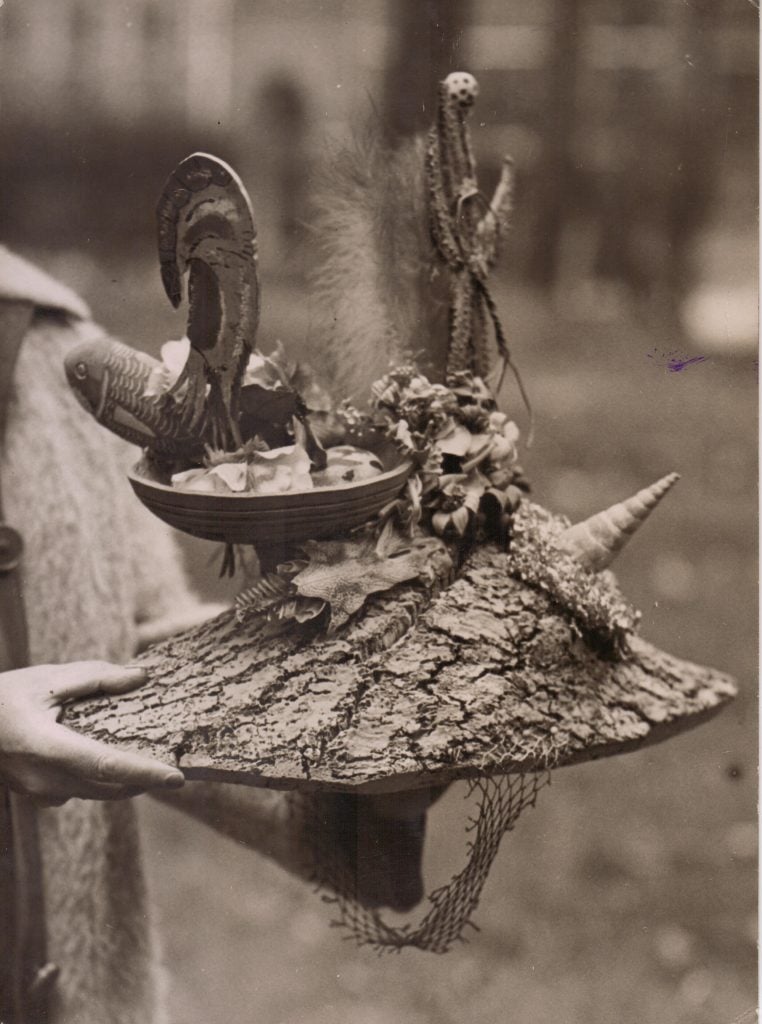
Photograph of “Ceremonial Hat for Eating Bouillabaisse.” 1936. © The estate of Eileen Agar.
“I surround myself with fantastic bric-a-brac in order to trigger my imagination,” Agar wrote in her autobiography, A Look at My Life (1988), of the fossils, textiles, leaves, and bones that she found and brought home. Collage was a central part of her practice that she described as “a displacement of the banal by the fertile invention of chance or coincidence.”
Agar also liked mixing non-figurative elements with the playful irrationality of Surrealism, and by 1939 was showing regularly at international Surrealist exhibitions.
In her Erotic Landscape, a collage from 1942, for example, Agar combined abstract patterns with recognizable images of fish and a nude woman. A cut-out piece of red paper could be a tendrilled bit of seaweed, or a purely abstract shape.
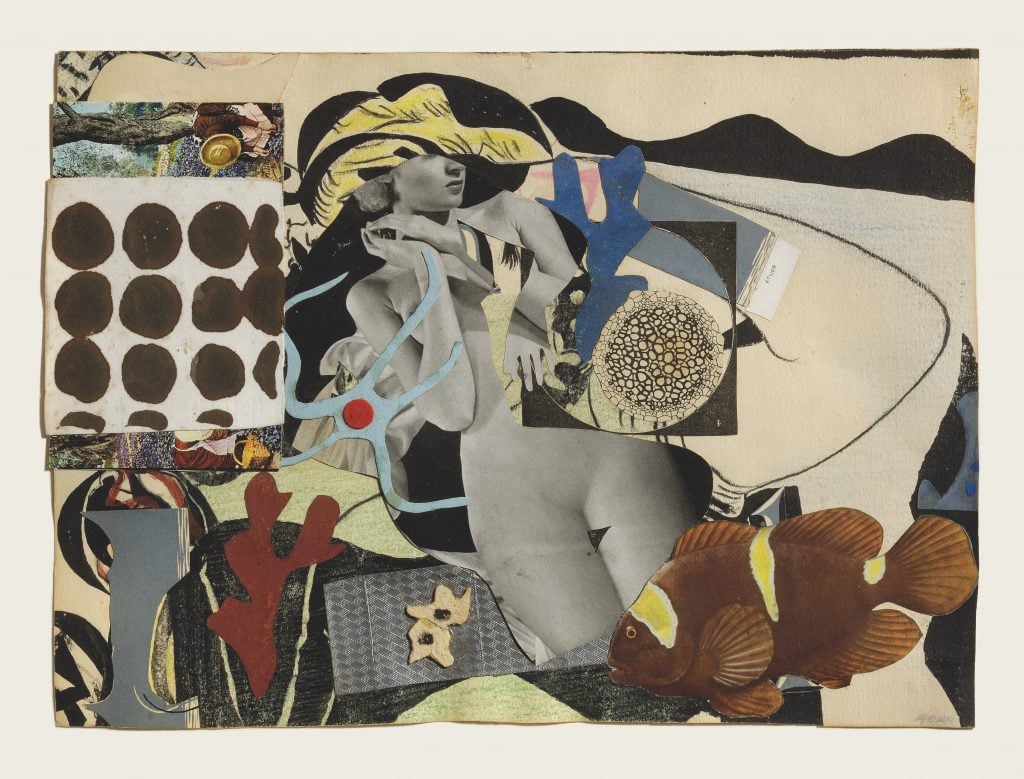
Eileen Agar, Erotic Landscape (1942). © The Estate of Eileen Agar. Photograph courtesy Pallant House Gallery, Chichester. © Doug Atfield.
“I see nothing incompatible in that,” Agar said. “Indeed we walk on two legs, and for me, one is abstract, the other surreal—it is point and counterpoint.”
Agar always marched away from convention, and towards the mysterious. “Above all she wished to avoid the banal,” critic and curator Andrew Lambirth wrote in the exhibition catalogue, based on his weekly visits to Agar’s studio during the last six years of her life. (She died in 1991.)
“Agar leads us to a new place, not quite on this earth though very much of it, a world of wonder, play, and glory. She gives us access to the kingdom of the imagination.”
“Eileen Agar: Angel of Anarchy” will be on view at Whitechapel Gallery, 77-82 Whitechapel High St, London, May 19–August 29, 2021.